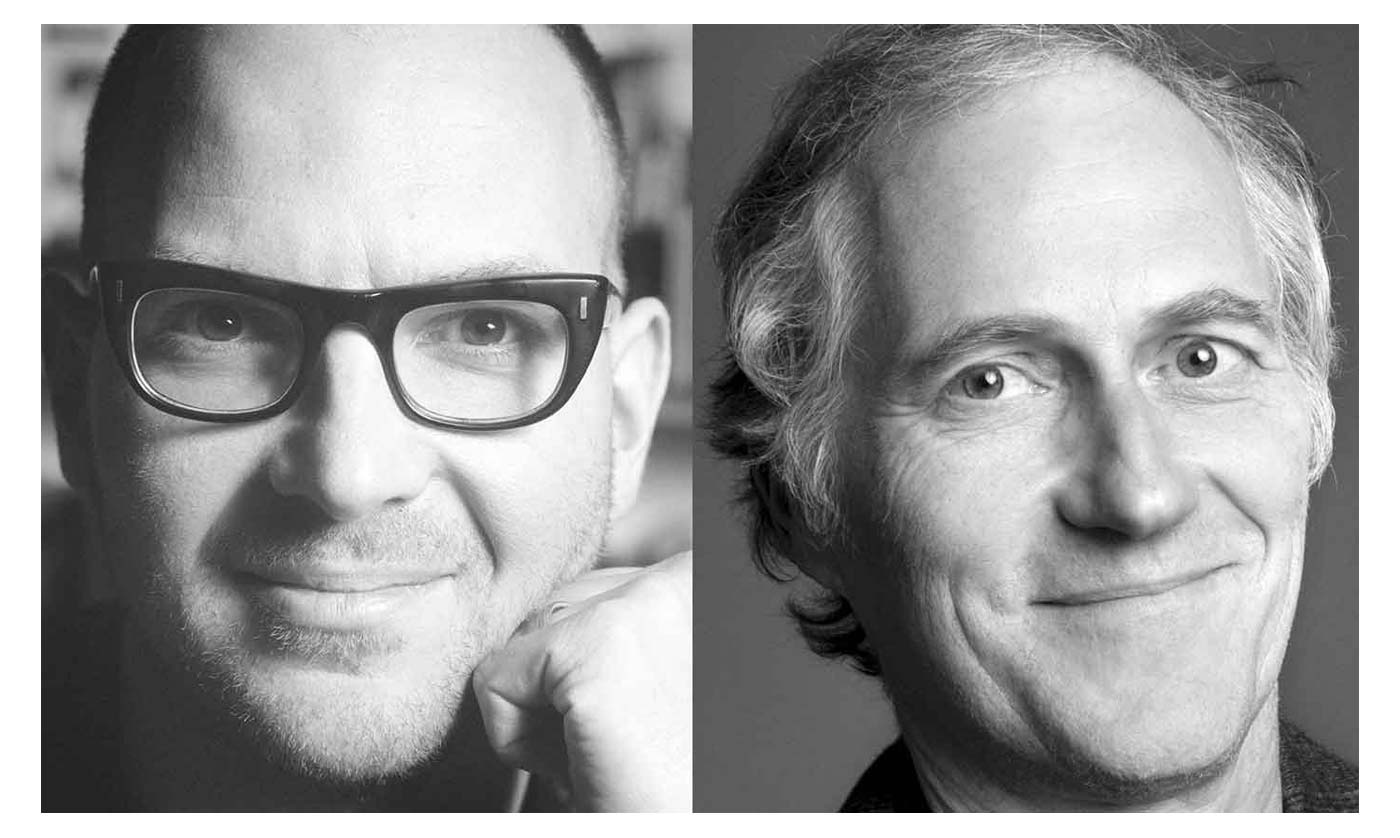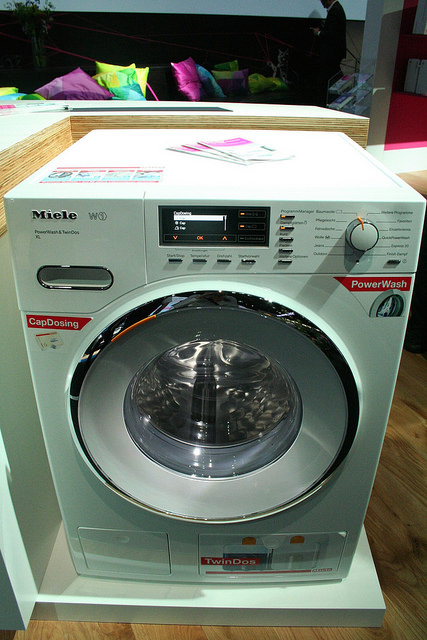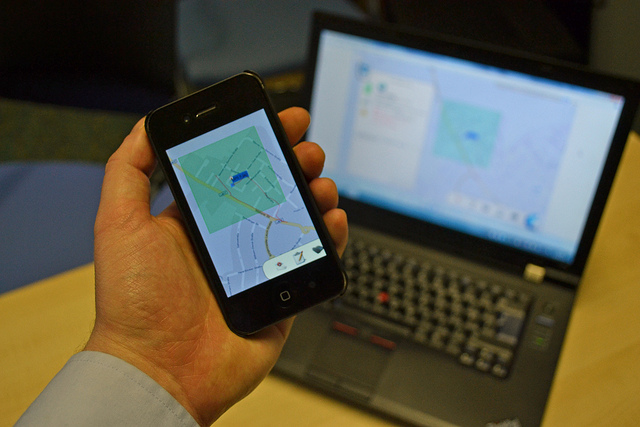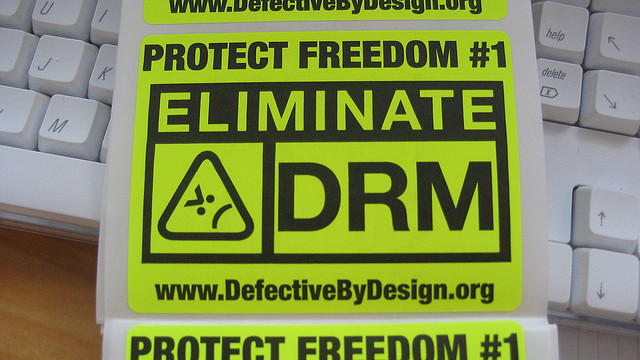Opportunities and challenges in the IoT
A conversation with Cory Doctorow and Tim O'Reilly.
 Cory Doctorow and Tim O'Reilly (source: O'Reilly)
Cory Doctorow and Tim O'Reilly (source: O'Reilly)
The following document is adapted from a conversation between Tim O’Reilly and Cory Doctorow. Follow along with their discussion to learn about many IoT opportunities and challenges. The video covers an hour-long Google Hangout on Air between Tim and Cory that covers how privacy and security are transforming IoT. This adaptation begins over halfway into their discussion when they bring in questions from Twitter.
Rethinking Industries with IoT
Tim:
I’m looking at a question from @leahthehunter. She says, “Which company’s new technologies are the most profoundly impacting how the Internet of Things evolves, and how will the IoT evolve in the next five years, beyond just more sensors?”
Cory:
Tim, that feels like a question for you. You have your finger more on the pulse of this.
Tim:
Sure, I can answer some of this. I think the biggest mistake that people make with the Internet of Things is in thinking that it is only about devices. Sure, there are sexy devices: your Nest thermostat and your Internet-connected drone. People say they are awesome. And yes there are things like smart TVs. But, the biggest impact to me seems to be when you start thinking about how things like sensors and devices change the way you actually do things.
When I first started talking about Uber as an Internet of Things company everyone looked at me like I had two heads. It is made possible by mobile Internet-connected sensors. The fact that they are in a smartphone doesn’t change anything. Let’s conduct a thought experiment. If there was a special device that lets you call a car, everyone would say, “Yes, it is the Internet of Things.” If the car was a self-driving car, then everyone would say it is the Internet of Things. But, the fact is, it is made possible by mobile sensors.
So, there is going to be a lot of opportunity just by using phones with all of the sensors in them. We see that with Apple’s HealthKit. Sure, some of it will be adding new sensors, but what is interesting to me is if you take Uber as a model Internet of Things company and use that as your icon instead of say, Nest. You might say, “Oh, wait a minute.” What is really happening here is, once you have connectivity and sensors out in the world, you can actually completely rethink an entire industry. And that is why Uber is so completely disruptive.
Let’s take a look at what the analogy might be in healthcare. Think of a home healthcare worker wearing an augmented reality headset, who can be beaming back images to a doctor if they need additional consultation. They can be summoned by sensors on an elderly patient who has failed to do their normal movement pattern. You can say, “We can completely reinvent healthcare.”
In fact, there is a company called Chen Med in Florida that I heard about from Todd Park. Because of the way they have now changed Medicare reimbursements, they can actually keep part of the savings if you save money. These guys have actually done concierge medicine for the sickest patients. These are people who were showing up at the emergency room multiple times a month. And, Chen Med is saying, it is cheaper to send someone to the patient’s house to make sure they are taking their medications. They actually get to keep part of this savings. And, that is actually an Internet of Things play. People are using sensors and data. And in this case it may not be full IoT, but let’s change the business model.
Let’s think about the Internet-connected washing machines. You may think naively about them. Perhaps you say, “Why do I care about my washing machine being connected?” Well, not when you are home, Amazon Dash not withstanding, but if you are in an apartment building or you are a college student in a college dorm, an Internet-connected washing machine totally changes the way you think about doing laundry. You don’t have to trudge down there with all of your dirty laundry only to find out that all of the machines are full. You don’t trudge down there to find out your laundry still has 10 minutes before it is done. All of these things suddenly make sense in the right context.

For me the biggest opportunities with the Internet of Things are not new devices and new sensors, but rethinking what you do in a way that you can do it more powerfully. This creates user value and user experience because we now have connected sensors.
Providing Human Superpowers
Cory:
I’m really interested in the idea of treating human beings as things that are good at sensing and not things that are there to be sensed.
Tim:
That is great, I like that.
Cory:
Yes, one of our Internet of Things models is perceived from the idea that a human emits a beacon and it can gather as much information as possible, often in a rather adversarial way about that human, and then makes predictions about what that human wants. And then you are alerted.
What if instead, you had a device, or a device ecosystem, that didn’t share your information with anyone else, that gathered information that you gave voluntarily because it was just for your own benefit. It is myware and not spyware. And then as you use this myware through the world, other things can emit information about themselves, and your device takes them in. They could look at your very intimate, not for sharing preferences, and present you with options, rather than treating you as a kind of ambulatory wallet. If you think about every offer from every business that you might pass today, it adds up to a gigabyte or two. We can handle that in our sleep. Why are we trying to tailor what information comes to you? Why aren’t they all promiscuously broadcasting? You receive them, and you filter them at your end using your device that can keep your secrets for you.
Tim:
I think the purpose of the Internet of Things is to give humans superpowers. If you think about it, GPS is a new sense. It is an augmentation of human beings. It is true that the Australian Aborigines had the songlines and they knew how to get around. But for a long time modern humans have not really had that superpower, but now we do. And I think we are going to see more and more of that.

I look at projects such as HoloLens, and other augmented reality platforms. We are heading in the direction of The Matrix. I want to download some new skill and I’m going to have this on-the-spot augmentation.
Working Together Efficiently
Cory:
Let’s take a look at the original superpower like the one that defines our species. The first superhuman thing we ever did was work with other people in cooperative ways. What two people can do translates what one person can do into what is superhuman. And economists like Ronald Coase have written at length how the major project of our species has been how to figure out more efficient ways of working together. We have corporations, we have mobile phones, we have churches, we have terrorist organizations, and we have governments. All of these are ways to make us superhuman, and more cheaply for certain purposes.
And where the Internet of Things and where actuators are really interesting is when you start to think about really low-cost collaboration in the physical world enabled by sensors. So, in Bruce Sterling‘s novel Distraction, which is a very prescient book, he has this scene where people collaboratively build a hotel. They start with this huge pile of bricks, like when you shake out the Lego box and you get the huge pile of everything that goes into your project. They get everything that goes into the hotel and they walk over to a cinderblock and they slap a little kind of sticky to it and it immediately starts talking. “Hi, I’m a cornerstone. Walk me three feet to the left, walk me one foot to the right, set me down. Find the trowel, find the cement.” And it senses and helps you, and you collaboratively work on the hotel as long as you want. Then you walk away from it, and the next person who wants to make the hotel, can pick up any piece, slap a rice-sized actuator sensor onto it, and it tells you where to put that piece down.

Tim:
Well, we are seeing something like that with augmented reality in certain kinds of situations. DAQRI is a company that has an augmented reality headset for neurospace workers, for complex mechanical work. They use a heads-up display for help with what they are working on. A worker with less skill can look at something because it is automatically providing background or context information. So, it is pretty interesting.
Public Sector IoT
I have another question here on Twitter. This is from Nicholas Tollervey @ntoll. “Given slow government bureaucracy, how do you effect change to introduce Internet of Things innovation in the public sector?”
Cory:
So, this is getting back to Lessig’s model of markets, code, law, and norms. In America, not only is Congress very slow, it actually has stopped making laws that aren’t just partisan gamesmanship. The amazing thing about the cellphone unlocking law is not that they passed a cellphone unlocking law, but that they passed any law at all.
Tim:
Laughing.
Cory:
You know we have this long history of using courts as a legislature’s second recourse, but that is something that civil liberties and the impact that litigation has done for a long time. This is not just because Congress and lawmakers are sometimes dysfunctional, but also because you sometimes see legislative bodies passing laws that are politically attractive.
Tim:
Yeah.
Cory:
But these laws obviously don’t pass constitutional muster. The idea is that we get to make this law that says everybody that disagrees with us is against the law. And then someone goes to court and gets that law overturned and then they go to their base and shrug, saying “We tried but the activist judges voided our crazy law that said everyone has to have the Ten Commandments tattooed to their forehead.” They made our law go away, even though we knew it would be a good idea.
But also with markets, these things all work together. You talked about the VCR before and one of the untold pieces of the VCR story is that over the eight years that the VCR was litigated, people kept making VCRs, even though the legal status of them was uncertain.
Note
IoT privacy and security
Be sure to listen to the first half of this hour-long Hangout between Tim and Cory to learn more about privacy and security in the IoT, and the example that the VCR provides to help illuminate these topics.
By the time the Supreme Court finally ruled on the VCR, there were six million VCRs in American living rooms, and all of those judges drove past video rental stores to get to court. And courts are consequentialists. They pay attention to the law, but they also pay attention to what their decisions will do to the world. For a judge to sit there and bang the gavel and say six million households now have to get rid of a piece of major entertainment technology in their living rooms because after eight years they decided that it is finally illegal, that is hard for them to do.
Win in the Marketplace
So, one of the things that will help litigation as to how this stuff should work is technologies that do the right thing. Technologies that go ahead and security audit the Internet of Things, even though you have to jailbreak it to do it. Or offer third-party patches. Or privacy enhancements. I mean my favorite third-party tool for Android is the Cyanogen module that lets me lie to my location sensor. I can download an app that doesn’t need my location, but requires it in order to run. I can tell my operating system to lie about where I am so the app still runs, but it doesn’t know where I am.
If companies still go on doing the right thing, when we get to that highest court and we are being heard, we will be able to use the fact that the markets marched on to do better.
Tim:
That is a really good point and it really does illustrate an important point that doing can sometimes be more important than activism. Making something that actually works differently in the world and succeeds can be a very powerful force for change. And that is really an appeal to the entrepreneurs out there: if you have an idea that people are doing it wrong, do it right and try and win in the marketplace, because you’ve actually persuaded people. I look at that in what we’ve done at O’Reilly Media and what others have done around DRM for publishing. We were a lonely voice at first, but now more and more publishers have ended up joining the DRM-free bandwagon, because there is enough evidence that it works. That it is no longer an issue.

Cory:
I think that is very true. I know that from my discussions with publishers that are DRM-free, the fact that you went DRM-free was a huge piece of their calculus. It was really a force for good in the world, Tim.
Tim:
Yes, and as we became a distribution company for other publishers, we said we will only distribute your content if it is DRM-free. There was actually an economic incentive for them to join.
Doing the Right Thing
Tim:
The point is, we can make social change for the good by our business practices, and that is something that is going well beyond the Internet of Things. I think there is an obligation for every company to think about how it creates value for society and not just for itself. And, we’ve kind of lost that sense. And there are so many issues, such as a new event I’m working on that we haven’t announced yet around jobs and the future of the economy in the face of technology. It’s not inevitable that companies must maximize their profits and screw their customers and screw the public. That is a choice. And it is a moral choice. And not only that, it is not the most effective choice. It is short-term profit optimization, but long-term destruction of the ecosystem and the world we live in. You see that choice all throughout our society, and I think we as entrepreneurs can make other choices, and must make other choices.
